#1880s ad
Text

ca. 1883
#felt tooth polisher#tooth care#1800s#self care 1800s#1883#smile#vintage#ephemera#advertisement#1880s ad#have you teeth?#lol#apothecary
1 note
·
View note
Text

Things are rough in the sepia filter district.
#animated gif#animated gifs#gif#gifs#old advertisements#old ads#retro#vhs#sepia tone#sepia filter#lady of the sepia#cigarette#smoking#80s#1880s
69 notes
·
View notes
Photo

Advertising fan, 1880s
11 notes
·
View notes
Text


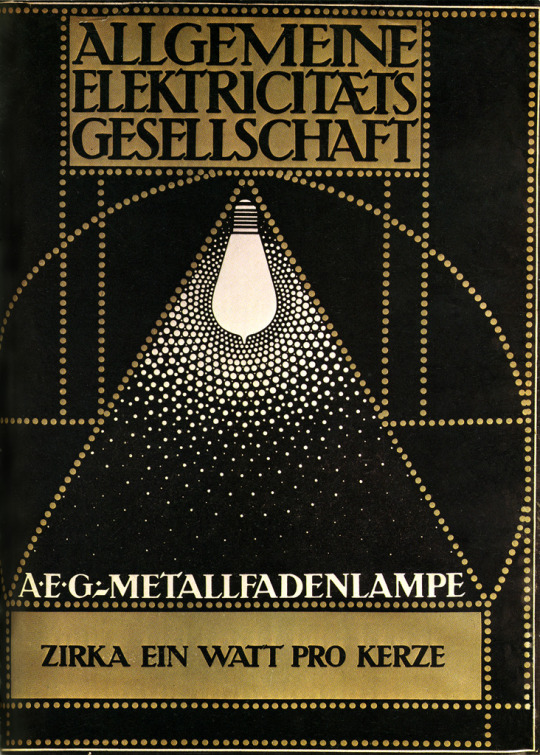
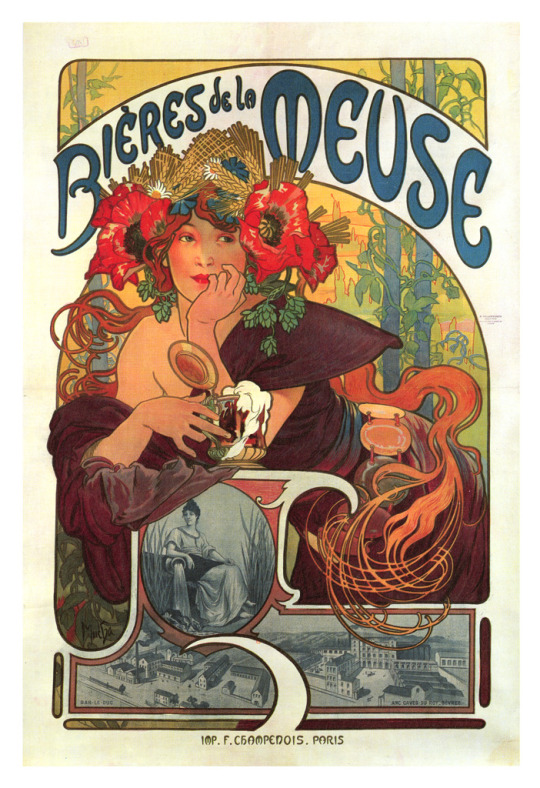
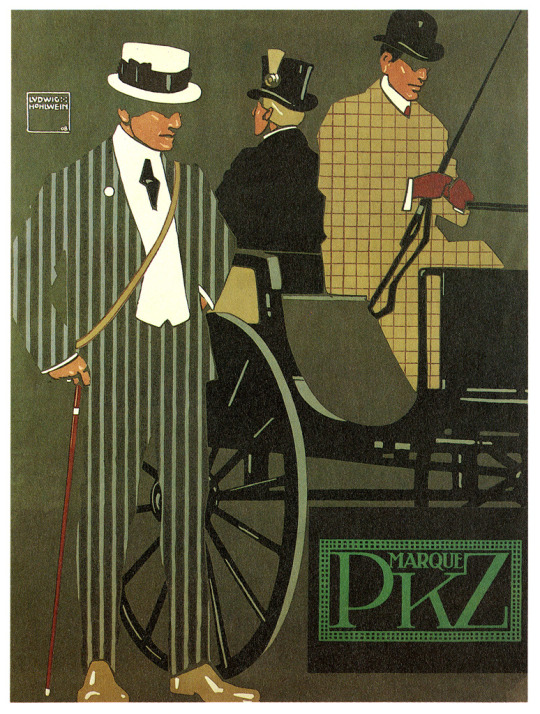
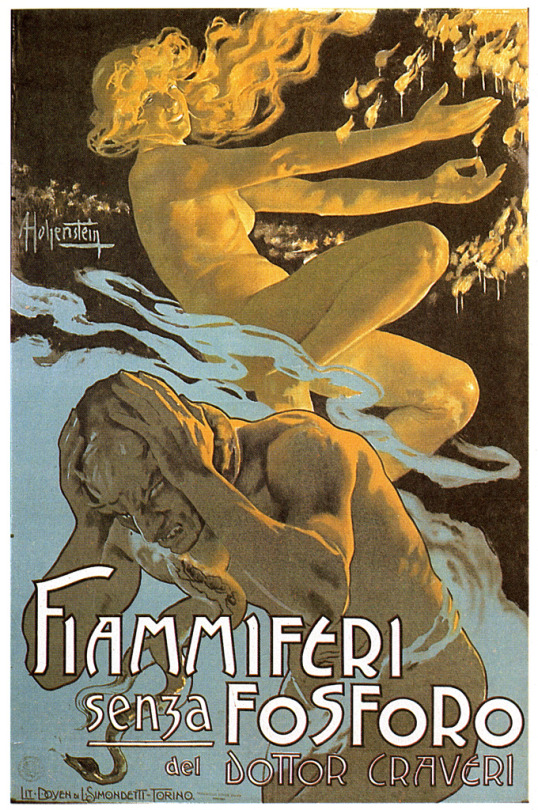


The Minneapolis College of Art and Design (MCAD) Library
Art of the Poster 1880-1918
"In the late nineteenth century, lithographers began to use mass-produced zinc plates rather than stones in their printing process. This innovation allowed them to prepare multiple plates, each with a different color ink, and to print these with close registration on the same sheet of paper. Posters in a range of colors and variety of sizes could now be produced quickly, at modest cost."
#privat livemont#theatrical posters#theatre#illustration#alphonse mucha#vintage ad#vintage#golden age#color litograph#jules cheret#adolfo hohenstein#ludwig hohlwein#peter behrens#art deco#art nouveau#1880s art#c. 1900#edwardian
236 notes
·
View notes
Text

The Pittsburgh Daily Post; October 15, 1884.
6 notes
·
View notes
Text

Hunt's Remedy, c. 1880s
2 notes
·
View notes
Photo

Map of Africa on the year 1880 AD, Before the European "Scramble for Africa"
2K notes
·
View notes
Note
why do zionists always assume its antisemitic to think that zionism a settler colonial idea
Modern Zionists aren't actually well-read into their own history. I could invoke the likes of Theodore Herlz, Ze'ev Jabotinsky, David Ben Gurion, and many other political Zionists and how they were ardent supporters of settler colonialism, yet it wouldn't get through their head, because they genuinely believe the land of Palestine is their right to claim, despite the people inhabitating the area. But to claim that the establishment of the Settler state was necessary due to antisemitism is not correct.
The pogrom of the Jewish people in the Pale of Settlement in Imperial Russia resulted in the mass displacement of Jews. But most Jews did not flee to Palestine, but to the US and Western Europe to live relatively better lives, due to the French revolution and so on. They had no desire whatsoever to move to Palestine due to its harsh climate and environment. Although the repression of Jews in the 19th century added to Zionism's appeal, Zionism did not emerge because of it as is often portrayed.
Jewish historian Michael Stanislawiski explains:
The first expression of this new ideology were published well before the spread of the new anti-semitic ideology and before the pogroms of the ealy 1880s. The fundamental cause of the emergence of modern Jewish nationalism was the rise, on the part of Jews themselves, of new ideologies that applied the basic tenets of modern nationalism to the Jews, and not a response to persecution.
-- Zionism, a short introduction (Stanislawski, 2017)
As was the case for that time, the doctrine of nationalism became prevalent across Europe. Many versions of it gained hold of European intellectuals and the upper-classes. One of these were ethnonationalism, which emphasised common ancestry. Such a view was popular among Germans, Hungarians, Russians, Poles and etc, who saw their "tribes" as being distinct, and therefore needed to be preserved from foreign threats. Zionism would mirror some of these aspects, which was prevalent in Eastern Europe. The founding father of Revisionist Zionism (and the precursor to the Likud party), Ze'ev Jabotinsky stated:
"The creation of a Jewish majority, was the fundamental aim of Zionism, the term "Jewish State", means a Jewish majority and Palestine will become a Jewish country at the moment when it has a Jewish majority".
-- Zionism, and the Arabs, 1882-1948 A study of ideology (Yosef Gorny, 1987)
However, there was another ideology emerging which was far more popular among the oppressed Jewish people, which would propell them to emancipate themselves where they lived. Revolutionary Socialism.
According Ilan Pappe, the doctrine of Zionism was vehemently opposed by Jewish leaders all around Europe on the basis of Talmudic violations, the rise of revolutionary socialism and the rise of Jewish assimilationism. Additionally, in a conference in Frankfurt, rabbis decided to omit the mentioning of "the return" from Jewish prayers as a reaction to Zionism. However, Zionism would face intense opposition from Socialist Jews, especially the Bundists, who openly declared Zionism to be anti-Socialist, opportunistic and reactionary. Zionism was an alien idea, and revolutionary socialism emphasised the importance of the liberation of Jews where they lived, resulting in an ideological feud between the Bundists and Political Zionists. Even the likes of the Chaim Weizmann, the first president of the Settler state, and David Ben Gurion, the first PM of the settler state, would condemn the Bundists for their opposition to Political Zionism.
731 notes
·
View notes
Text

La Repasseuse
Hello I'm back with a lingerie set this time ! It includes corsets, a corset cover and some drawers. Althought the painting that inspired me this time is older than usual, the cc I ended up making is fit for the 1870s, 1880s, 1890s & 1900s.
More pics and download below
This set was mainly inspired by the Edgar Degas's painting : La Repasseuse (The Laundress/Ironer).
————————— Plain Corsets —————————

———————————————————————————
In the 19th and 20th corsets were used to achieve the fashionable shape of the times, provide bust support, maintain good posture and distribute the weight of the skirt's and petticoat's yards of fabric.
Althought corsets were underwear judging from the paintings I've seen (cf reference pictures below) working women would sometimes take off their bodices when it was getting too hot (ironers, laundresses as well as peasants during harvest).
I've kept these plain corsets pretty simple only featuring the boning channels (where the whale bones or steel bones would go) and a bit of cording under the bust, as I've seen on most corsets of that period.
I've made 2 versions :
is meant to be worn on top of clothing (presumably underwear but you do you) and as such are compatible with my skirts and split drawers
is meant to be worn under clothing (petticoat or skirt)

32 swatches : 22 solids & 10 floral patterns
2 versions
————————— Lace Corsets —————————

———————————————————————————
These are the same corset but with some lace at the top, a very common style but probably more expensive than the plainer ones.
These corsets too exist in 2 versions (V1 to wear over clothing and V2 to wear under).

32 swatches : 22 solids & 10 floral patterns
2 versions
——————— Embroidered Corsets ———————

———————————————————————————
These corsets are the same as the lace ones with added embroidery.
This type of embroidery is called flossing it's decorative but also practical : the flossing reduces the corset bones’ movements to improve the comfort of the wearer.
These corsets too exist in 2 versions (V1 to wear over clothing and V2 to wear under).

36 swatches : 24 solids & 10 floral patterns
2 versions
————————— Corset Cover —————————

———————————————————————————
As the name implies corset cover were worn on top of corsets. Their purposes were to smooth over the corset lines (the equivalent of today's pantylines), to hide the corset's color (for it to not show under a lighter bodice), to absorb sweat so as to protect the bodice and finally especially in the edwardian era to act as padding to achieve the fashionable pigeon breast look.
That being said it seems not everyone wore corset covers from what I've seen.
Like corsets, corset cover too were sometimes used as workwear by women working in hot environnements (ironers, laundresses as well as peasants during harvest).
This corset cover includes 3 styles (pictured below) with different degrees of "laceyness". I tried my best to make it work for both 1880s and Edwardian fashion, in the end I think it's leaning more toward the later.

15 swatches : 3 styles (cf picture above) with 5 swatches of white/off white each
————————— Split Drawers —————————

———————————————————————————
For most of the 19th century and even the beginning of the 20th century, women drawers were open : they were composed of 2 legs that would be buttoned or tied together at the waist and that would overlap in the crotch but could be split appart when necessary.
I've made 2 versions of these, since I've seen both :
is tighter under the knee giving that poofy "bloomer" like shape
is straight legged

10 swatches with 5 different white & off white color ways
2 versions
———————————————————————————
Download : dropbox — simfileshare
———————————————————————————
And once again as a bonus some of my main reference pictures :

#my cc#ts4cc#ts4 historical#ts4 clothes#sims 4 historical#sims 4 clothes#maxis match#decade challenge#1880#clothes#timeless#teen#grown up#1880s Impressionism Sets
386 notes
·
View notes
Note
Hi, this is a bit of a shot in the dark on my end, but I have a fashion inquiry (and I apologize if I sound ridiculous at all; I’m a bit at my wit’s end).
Is there a good way to research forms of casual Victorian garb? I feel like I’m going a bad route by inserting the word ‘Victorian’ into any search because it results in rather fancy things (or modern twists on such that are purchasable). Would it be wiser to site dates in search? Is this going to fruitless?
Sorry for taking up any time if this is out of wheelhouse. But if you do answer, I really appreciate it.
I'll do my best! Focusing on womenswear, because...well, that's what I know best. But if anyone wants to chime in about the gentlemen, please do so!
So, casual Victorian doesn't always read as Casual to us nowadays. Standards of casual clothing- that is, clothing one wears for everyday life when nothing special is going on -were rather higher than we have today.

This is an illustration of matchstick-makers in London's East End c. 1871, done by one Herbert Johnson. The women have their sleeves rolled up and aprons on, but when they leave the factory (rolling their sleeves down, adding hats to go outside- which most of them would have done; it was part of looking Respectable) they might be indistinguishable to us from any other women of the same era wearing not particularly bustle-y skirts. Some of them probably have on the commonplace Matching Skirt And Bodice dress format of the era; others have on blouses made from the same patterns as those worn by middle- and upper-class women.
Also note that they have on ribbons, chokers, earrings...they're just like us. They like wearing things that make them feel Put Together, even though they're doing one of the lowest-valued, most dangerous jobs open to women at the time. Because people have always been people, regardless of time or social class.
And for middle-class women and up, Casual might be even harder to distinguish from "fancy" to us today.

This is a mid-late 1880s day dress with a skirt length suitable for lots of walking, from Augusta Auctions. Could not tell you the social status of the woman who owned it, genuinely. Probably not the absolute poorest of the poor, but beyond that...this is a dress you could potentially wear to run errands. Even to go to work, if your job wasn't especially physical. Because. I don't know. It's a Day Dress. You wear it for day things. It's not especially formal, because then it would be made of a more delicate material and probably have a longer skirt (unless it was a Serious Dancing ball gown). Possibly also a lower neckline and puffed sleeves, if it was exclusively for the most formal events.
The idea that a dress was "fancy" just because it had ornamentation wasn't really in their cultural vocabulary.

Here is a group of women playing croquet in what looks like the early-mid 1870s. They're just hanging out! Having a good time! They're probably middle or upper class, but that's what they wear to chill outside with friends- to play a lowkey sport, even.
So yeah, it can be hard to map Victorian everyday clothing onto our "jeans and t-shirt" understanding of what makes an outfit casual. They had skirts and blouses for most relevant decades, but even those outfits often end up looking formal to us nowadays because of what I call Ballgownification- the idea that, since we only wear clothes that look even vaguely like what they had for extremely dressy occasions, we assume everything we see of their clothing was dressy.
(Someone please ask for my rant about Ballgownification)
Searching for "day dress," "walking dress," "blouse," "blouse waist," and "shirtwaist" (the last for the late 19th-early 20th century when that term became commonplace) might help. Best of luck!
#victorian#history#fashion history#dress history#clothing history#ask#madsk3tch#even just Throwing Something On looks dressy if all you have to throw on is. that.#I make a lot of my clothes from extant patterns and people comment on how dressed-up and put together I look#which is very kind but. these are magazine patterns. anyone had access to them#and I often even take off some of the recommended trims no less#a casual blouse waist from 1869 looks quite dressy to a modern audience#long post
197 notes
·
View notes
Text

#animated gif#animated gifs#gif#gifs#old advertisements#old ads#retro#vhs#sony#tube tv#television#expensive#70s#18#KV-1880
5 notes
·
View notes
Text
Cross-posting an essay I wrote for my Patreon since the post is free and open to the public.

Hello everyone! I hope you're relaxing as best you can this holiday season. I recently went to see Miyazaki's latest Ghibli movie, The Boy and the Heron, and I had some thoughts about it. If you're into art historical allusions and gently cranky opinions, please enjoy. I've attached a downloadable PDF in the Patreon post if you'd prefer to read it that way. Apologies for the formatting of the endnotes! Patreon's text posting does not allow for superscripts, which means all my notations are in awkward parentheses. Please note that this writing contains some mild spoilers for The Boy and the Heron.

Hayao Miyazaki’s 2023 feature animated film The Boy and the Heron reads as an extended meditation on grief and legacy. The Master of a grand tower seeks a descendant to carry on his maddening duty, balancing toy blocks of magical stone upon which the entire fabric of his little pocket of reality rests. The world’s foundations are frail and fleeting, and can pass away into the cold void of space should he neglect to maintain this task. The Master’s desire to pass the torch undergirds much of the film’s narrative.

(Isle of the Dead. Arnold Böcklin. 1880. Oil on Canvas. Kunstmuseum. Basel, Switzerland.)
Arnold Böcklin, a Swiss Symbolist(1) painter, was born on October 16 in 1827, the same year the Swiss Evangelical Reformed Church bought a plot of land in Florence from the Grand Duke of Tuscany, Leopold II, that had long been used for the burials of Protestants around Florence. It is colloquially known as The English Cemetery, so called because it was the resting place of many Anglophones and Protestants around Tuscany, and Böcklin frequented this cemetery—his workshop was adjacent and his infant daughter Maria was buried there. In 1880, he drew inspiration from the cemetery, a lone plot of Protestant land among a sea of Catholic graveyards, and began to paint what would be the first of six images entitled Isle of the Dead. An oil on canvas piece, it depicts a moody little island mausoleum crowned with a gently swaying grove of cypresses, a type of tree common in European cemeteries and some of which are referred to as arborvitae. A figure on a boat, presumably Charon, ferries a soul toward the island and away from the viewer.
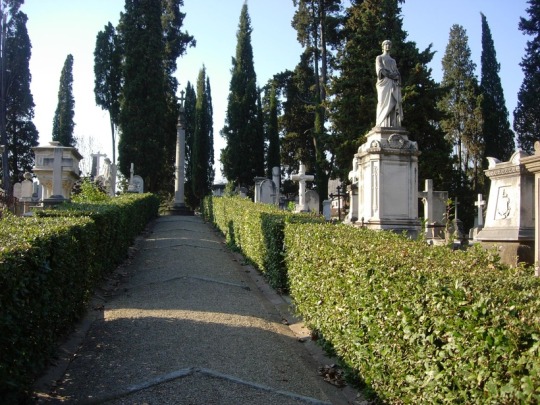
(Photo of The English Cemetery in Florence. Samuli Lintula. 2006.)
The Isle of the Dead paintings varied slightly from version to version, with figures and names added and removed to suit the needs of the time or the commissioner. The painting was glowingly referenced and remained fairly popular throughout the late 19th and early 20th centuries. The painting used to be inescapable in much of European popular culture. Professor Okulicz-Kozaryn, a philologist (someone with a deep interest in the ways language and cultural canons evolve)(2) observed that the painting, like many other works in its time, was itself iterative and became widely reiterated and referenced among its contemporaries. It became something like Romantic kitsch in the eyes of modern art critics, overwrought and excessively Byronic. I imagine Miyazaki might also resent a work of that level of manufactured ubiquity, as Miyazaki famously held Disney animated films in contempt (3). Miyazaki’s films are popularly aspirational to young animators and cartoonists, but gestures at imitation typically fall well short, often reducing Miyazaki’s weighty films to kitschy images of saccharine vibes and a lazy indulgence in a sort of empty magical domestic coziness. Being trapped in a realm of rote sentiment by an uncritical, unthoughtful viewership is its own Isle of Death.

(Still from The Boy and the Heron, 2023. Studio Ghibli.)
The Boy and the Heron follows a familiar narrative arc to many of Miyazaki’s other films: a child must journey through a magical and quietly menacing world in order to rescue their loved ones. This arc is an echo of Satsuki’s journey to find Mei in My Neighbor Totoro (1988) and Chihiro’s journey to rescue her parents Spirited Away (2001). To better understand Miyazaki’s fixation with this particular character journey, it can be instructive to watch Lev Atamanov’s 1957 animated film, The Snow Queen (4)(5), a beautifully realized take on Hans Christian Andersen’s 1844 children’s story (6)(7). Mahito’s journey continues in this tradition, as the boy travels into a painted world to rescue his new stepmother from a mysterious tower.
Throughout the film, Miyazaki visually references Isle of the Dead. Transported to a surreal world, Mahito initially awakens on a little green island with a gated mausoleum crowned with cypress trees. He is accosted by hungry pelicans before being rescued by a fisherwoman named Kiriko. After a day of catching and gutting fish, Mahito wakes up under the fisherwoman’s dining table, surrounded by kokeshi—little wooden dolls—in the shapes of the old women who run Mahito’s family’s rural household. Mahito is told they must not be touched, as the kokeshi are wards set up for his protection. There is a popular urban legend associated with the kokeshi wherein they act as stand-ins for victims of infanticide, though there seems to be very little available writing to support this legend. Still, it’s a neat little trick that Miyazaki pulls, placing a stray reference to a local legend of unverifiable provenance that persists in the popular imagination, like the effect of fairy stories passed on through oral retellings, continually remolded each new iteration.
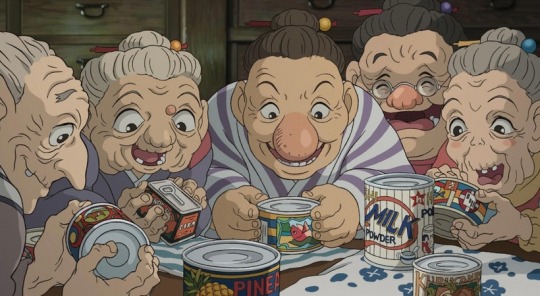
(Still from The Boy and the Heron, 2023. Studio Ghibli.)
Kiriko’s job in this strange landscape is to catch fish to nourish unborn spirits, the adorable floating warawara, before they can attempt to ascend on a journey into the world of the living. Their journey is thwarted by flocks of supernatural pelicans, who swarm the warawara and devour them. This seems to nod to the association of pelicans with death in mythologies around the world, especially in relationship to children (8). Miyazaki’s pelicans contemplate the passing of their generations as each successive generation seems to regress, their capacity to fulfill their roles steadily diminishing.
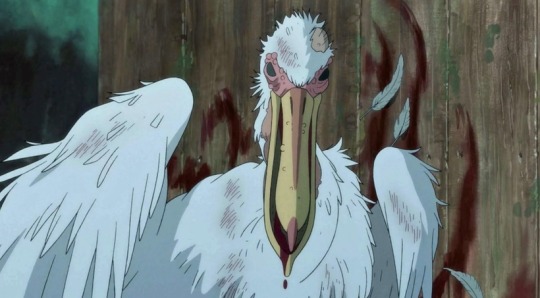
(Still from The Boy and the Heron, 2023. Studio Ghibli.)
As Mahito’s adventure continues, we find the landscapes changing away from Böcklin’s Isle of the Dead into more familiar Ghibli territories as we start to see spaces inspired by one of Studio Ghibli’s aesthetic mainstays, Naohisa Inoue and his explorations of the fantasy realms of Iblard. He might be most familiar to Ghibli enthusiasts as the background artists for the more fantastical elements of Whisper of the Heart (1995).

(Naohisa Inoue, for Iblard Jikan, 2007. Studio Ghibli.)
By the time we arrive at the climax of The Boy and the Heron, the fantasy island environment starts to resemble English takes on Italian gardens, the likes of which captivated illustrators and commercial artists of the early 20th century such as Maxfield Parrish. This appears to be a return to one of Böcklin’s later paintings, The Island of Life (1888), a somewhat tongue-in-cheek reaction to the overwhelming presence of Isle of the Dead in his life and career. The Island of Life depicts a little spot of land amid an ocean very like the one on which Isle of the Dead’s somber mausoleum is depicted, except this time the figures are lively and engaged with each other, the vegetation lush and colorful, replete with pink flowers and palm fronds.

(Island of Life. Arnold Böcklin. Oil on canvas. 1888. Kunstmuseum. Basel, Switzerland.)
In 2022, Russia’s State Hermitage Museum in Saint Petersburg acquired the sixth and final Isle of the Dead painting. In the last year of his life, Arnold Böcklin would paint this image in collaboration with his son Carlo Böcklin, himself an artist and an architect. Arnold Böcklin spent three years painting the same image three times over at the site of his infant daughter’s grave, trapped on the Isle of the Dead. By the time of his death in 1901 at age 74, Böcklin would be survived by only five of his fourteen children. That the final Isle of the Dead painting would be a collaboration between father and son seemed a little ironic considering Hayao Miyazaki’s reticence in passing on his own legacy. Like the old Master in The Boy and the Heron, Miyazaki finds himself with no true successors.
The Master of the Tower's beautiful islands of painted glass fade into nothing as Mahito, his only worthy descendant, departs to live his own life, fulfilling the thesis of Genzaburo Yoshino’s 1937 book How Do You Live?, published three years after Carlo Böcklin’s death. In evoking Yoshino and Böcklin’s works, Hayao Miyazaki’s The Boy and the Heron suggests that, like his character the Master, Miyazaki himself must make peace with the notion that he has no heirs to his legacy, and that those whom he wished to follow in his footsteps might be best served by finding their own paths.
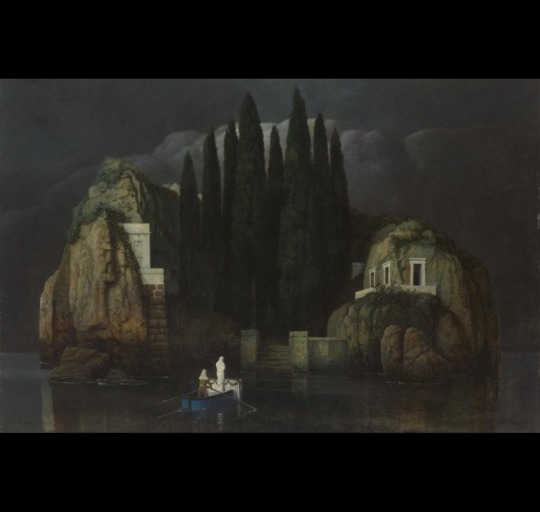
(Isle of the Dead. Arnold and Carlo Böcklin. Oil on canvas. 1901. The State Hermitage Museum. Saint Petersburg, Russia.)
INFORMAL ENDNOTES
1 - Symbolists are sort of tough to nail down. They were started as a literary movement to 1 distinguish themselves from the Decadents, but their manifesto was so vague that critics and academics fight about it to this day. The long and the short of it is that the Symbolists made generous use of a lot of metaphorical imagery in their work. They borrow a lot of icons from antiquity, echo the moody aesthetics from the Romantics, maintained an emphasis on figurative imagery more so than the Surrealists, and were only slightly more technically married to the trappings of traditionalist academic painters than Modernists and Impressionists. They're extremely vibes-forward.
2 - Okulicz-Kozaryn, Radosław. Predilection of Modernism for Variations. Ciulionis' Serenity among Different Developments of the Theme of Toteninsel. ACTA Academiae Artium Vilnensis 59. 2010. The article is incredibly cranky and very funny to read in parts. Contains a lot of observations I found to be helpful in placing Isle of the Dead within its context.
3 - "From my perspective, even if they are lightweight in nature, the more popular and common films still must be filled with a purity of emotion. There are few barriers to entry into these films-they will invite anyone in but the barriers to exit must be high and purifying. Films must also not be produced out of idle nervousness or boredom, or be used to recognise, emphasise, or amplify vulgarity. And in that context, I must say that I hate Disney's works. The barrier to both the entry and exit of Disney films is too low and too wide. To me, they show nothing but contempt for the audience." from Miyazaki's own writing in his collection of essays, Starting Point, published in 2014 from VIZ Media.
4 - You can watch the movie here in its original Russian with English closed captions here.
5 If you want to learn more about the making of Atamanoy's The Snow Queen, Animation Obsessive wrote a neat little article about it. It's a good overview, though I have to gently disagree with some of its conclusions about the irony of Miyazaki hating Disney and loving Snow Queen, which draws inspiration from Bambi. Feature film animation as we know it hadonly been around a few decades by 1957, and I find it specious, particularly as a comic artistand author, to see someone conflating an entire form with the character of its content, especially in the relative infancy of the form. But that's just one hot take. The rest of the essay is lovely.
6 - Miyazaki loves this movie. He blurbed it in a Japanese re-release of it in 2007.
7 - Julia Alekseyeva interprets Princess Mononoke as an iteration of Atamanov's The Snow Queen, arguing that San, the wolf princess, is Miyazaki's homage to Atamanoy's little robber girl character.
8 - Hart, George. The Routledge Dictionary of Egyptian Gods And Goddesses. Routledge Dictionaries. Abingdon, United Kingdom: Routledge. 2005.
#hayao miyazaki#the boy and the heron#how do you live#arnold böcklin#carlo böcklin#symbolists#symbolism#animation#the snow queen#lev atamanov#naohisa inoue#the endnotes are very very informal aksjlsksakjd#sorry to actual essayists
519 notes
·
View notes
Text

Gorgeous 1880 townhouse in Baltimore, MD, 4bds, 4ba, $950K. A cool designer must have done the interior, b/c it is fabulous. I want it so bad.

First, you enter a foyer with original doors, floor, leaded glass windows, and colorful murals added to the walls.

The long hall is made into an art gallery with lighting all along the ceiling.

Double doors open to the sitting room.

The first room off the hall is this gloriously blue and white sitting room. A wall must've been removed b/c there are 2 identical fireplaces.

The marble has been beautifully cleaned and preserved.

This end has the window in the front of the house.

And, this end has a little work area with built-in shelving and a door to the elevator.

How cool is this?

Moving along down the hall, there's a door to the guest powder room.

This is interesting wallpaper- the Queen with Crazy Eyes and a beautiful little cobalt blue and gold sink. I love it.

The dining room is accented in bright yellow and has 2 doors to the deck.

The kitchen's small, and very white.

It has a nice yellow service window, though.

The gorgeous gracefully curving stairs are so colorful, the steps and balusters are beautifully understated colors.


Beautiful family room up here.

Nice large bedroom.

The bath is a very nice combination of old and new.

This looks like the primary bedroom. Very roomy.

Walk-in closet.

I don't know why they hid this amazing dragon mural on the 3rd level.

There's a room up here that can be an extra bedroom.

Plus another full bath.

The lower level is finished. It even has a fireplace.

Plus, a full kitchen, bedroom, and another sitting room.

And, a full bath. So, this is actually an apt. down here.


Quite a sizeable, beautifully landscaped yard. and garden.

Plus a rare gem in a city- a garage and a driveway.
https://www.zillow.com/homedetails/1421-Park-Ave-Baltimore-MD-21217/36486305_zpid/
210 notes
·
View notes
Text
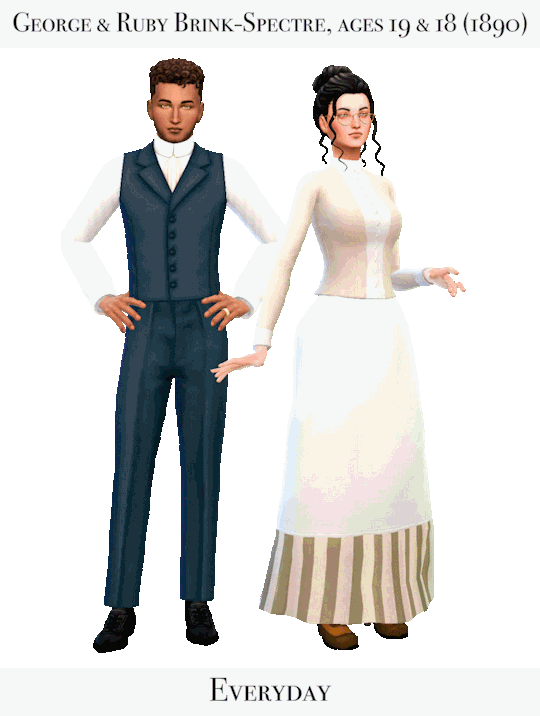

George and Ruby's outfits going into the 1890s represent the odd dichotomy of their new lives. On one hand, they live a relatively "simple" life on Ruby's father's farm, and are compelled to dress practically, in simple, sturdy clothes, in order to support a lifestyle of hard labor. On the other hand, they have Moses's consistent financial support - less so cash, more often in the form of lavish gifts, especially of expensive clothing. They often have multiple outfits for the same occasion, one more expensive, and one more practical.
George in particular has taken to Moses's habit of giving gifts. George finds the promise of wealth infinitely appealing, and although he hasn't yet obtained said wealth, Moses's expensive presents often make him feel as if he has. Because of this influence from his father-in-law, George's outfits have also trended more towards Moses's all-black color scheme, becoming darker in color and adding in more blues and jewel tones, to replace George's teenage greens and yellows. He dresses in Moses's gift-clothing whenever possible, only returning to more practical garments while working on the farm.
Ruby, on the other hand, seems discomforted by the expensive clothes her father throws at her. Her hunger for independence and identity tends to push her away from making use of his gifts, no matter how lovely. She does dress up when he asks her to, or when the situation arises, but otherwise Ruby favors sturdy, comfortable, practical clothing. Some of her outfits do retain her teenage greens and yellows, especially those given to her by Moses, but the majority of her clothes are in a soft, neutral color palette, made up of mostly creams and browns. Still, Ruby does have a taste for drama, and what she lacks in fashionable clothing, she makes up for in her variable, expressive hats, often covered in flowers or feathers.
Links below the cut
George
Genetics: Skinblend / Eye shape / Blush / Hair / Beard (High School Years)
Everyday: Outfit / Shoes / Ring (Basegame)
On The Farm: Outfit
Going Out: Jacket / Pants / Hat / Gloves (Get to Work)
Wedding: Outfit / Hat / Gloves (Get to Work)
Formal: Top / Pants / Hat
Underthings: Pants
Sleep: Union Suit (TSR warning)
Morning: Robe / Slippers (Basegame)
Hot Weather 1: Outfit / Hat
Hot Weather 2: Outfit / Hat
Cold Weather 1: Outfit / Scarf / Hat
Cold Weather 2: Outfit / Scarf / Hat (Basegame)
Ruby
Genetics: Skinblend / Eye shape / Structure (retired) / Nose Details / Eyebags / Updo / Blush (High School Years)
Everyday: Glasses (TSR warning) / Top / Skirt / Apron Acc / Ring / Shoes (Post deleted)
On The Farm: Hat / Top / Skirt & Apron Acc
Going Out: Hat / Outfit (1880s set) / Jacket / Gloves (Get to Work)
Wedding: Dress (Anachronistic) / Necklace / Veil / Earrings / Gloves
Formal: Dress / Earrings (Growing Together) / Gloves / Flowers
Underthings: Corset / Combinations / Socks (Dream Home Decorator) / Hair
Sleep: Nightgown / Braids
Morning: Robe / Slippers (Basegame)
Hot Weather 1: Dress / Hat
Hot Weather 2: Outfit (The Schoolmistress) / Hat
Cold Weather 1: Top / Skirt / Scarf / Hat (Eco Lifestyle) / Gloves (Horse Ranch)
Cold Weather 2: Outfit / Scarf / Hat
Playing with SeveralPerson’s Ultimate Decades Challenge Rules
Started: 1800
Current year: 1890
Family tree
Spreadsheet
CC Finds
#remind me not to give my sims so many outfits next time around#it literally took like two hours#to find all those links#(the real lesson is that i should organize my cc better)#but that's against my nature#ts4 ultimate decades challenge#ts4 decades challenge#sims 4 ultimate decades challenge#sims 4 decades challenge#decades challenge#ultimate decades challenge#spectre legacy#spectre family#npcs#spectre lookbooks#npc lookbooks#lookbooks#ruby spectre#george brink#ruby spectre lookbooks#george brink lookbooks#ts4 historical#sims 4 historical#1890s#1890s lookbook#esoteric sims
160 notes
·
View notes
Text

The Pittsburgh Daily Post; October 15, 1884.
0 notes
Note
Hello there,
Here are some more fashion plates for you, if you're interested.

Above: Godey's Lady's Book 1880

Above: Godey's Lady's Book 1880

Godey's Lady's Book 1880

Peterson's magazine 1868

Above: Peterson's magazine, 1868

The Designer 1910
Love your blog!!
hello my dear! 💖
thank you so much for these – they're gorgeous!! ☺️☺️ I especially love some of those purples! 💜💜
I've gone ahead and added them to the queue! 🫡🫡
thank you again and I hope you have a lovely day! 🥰🥰
83 notes
·
View notes